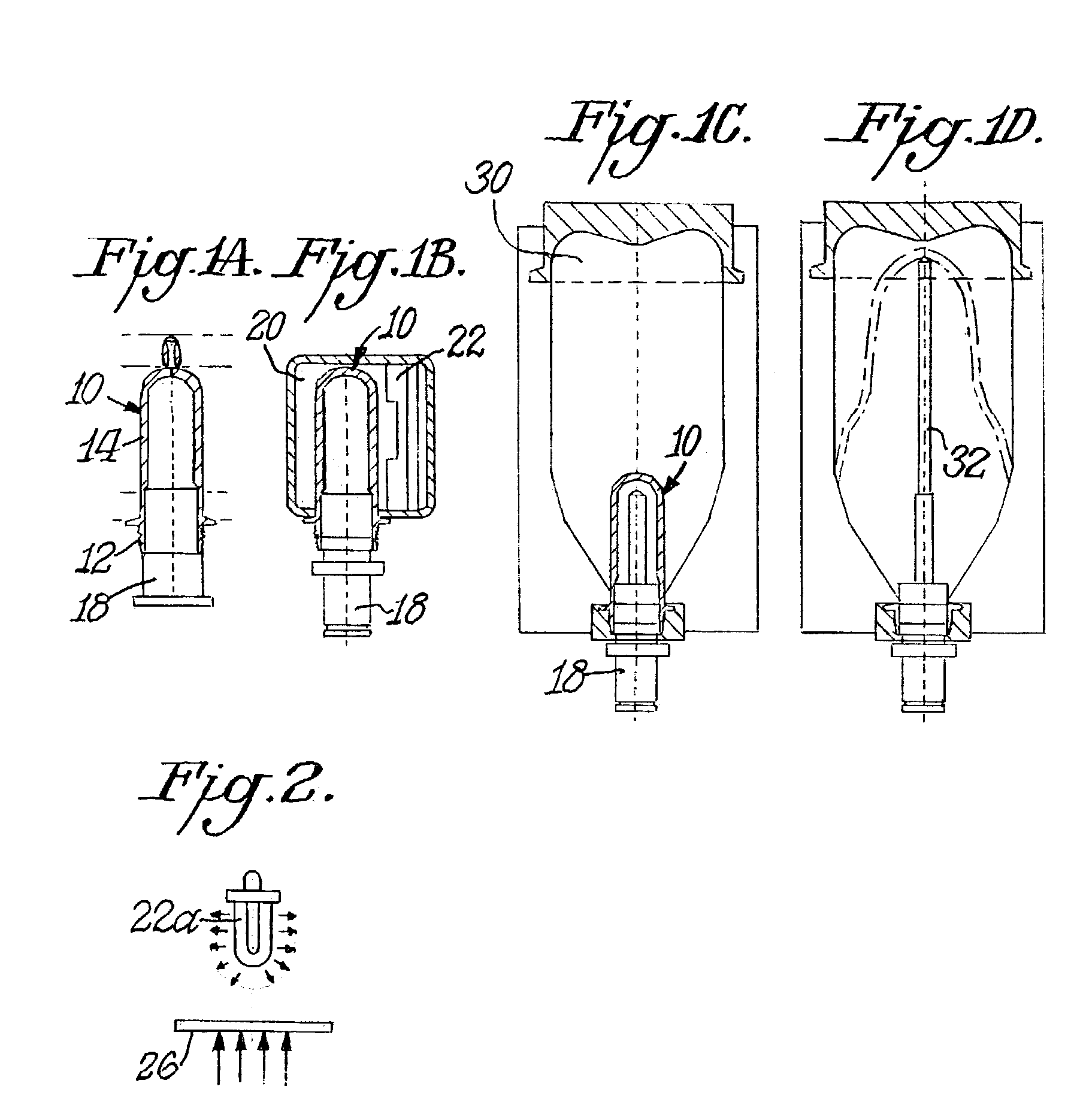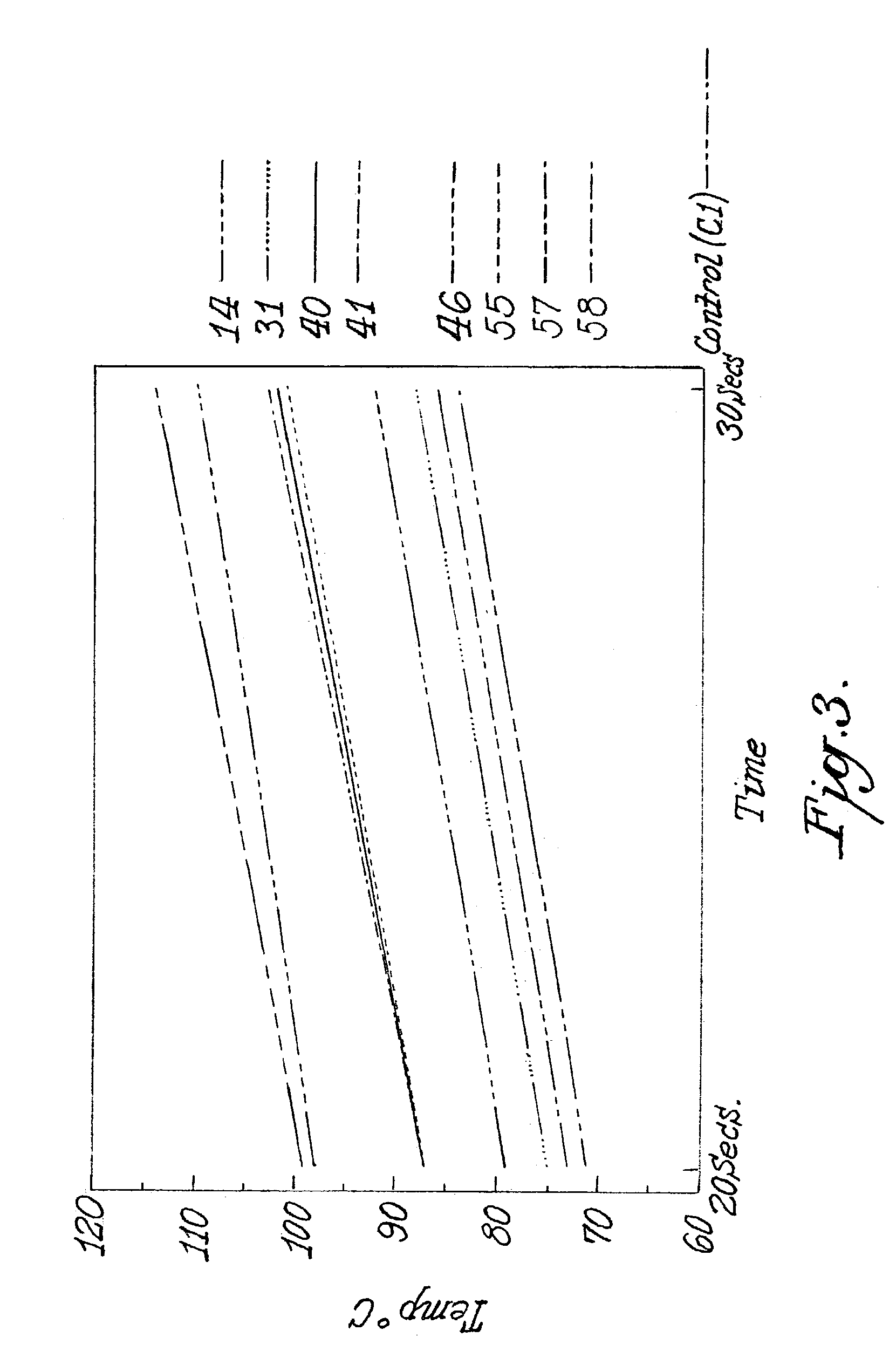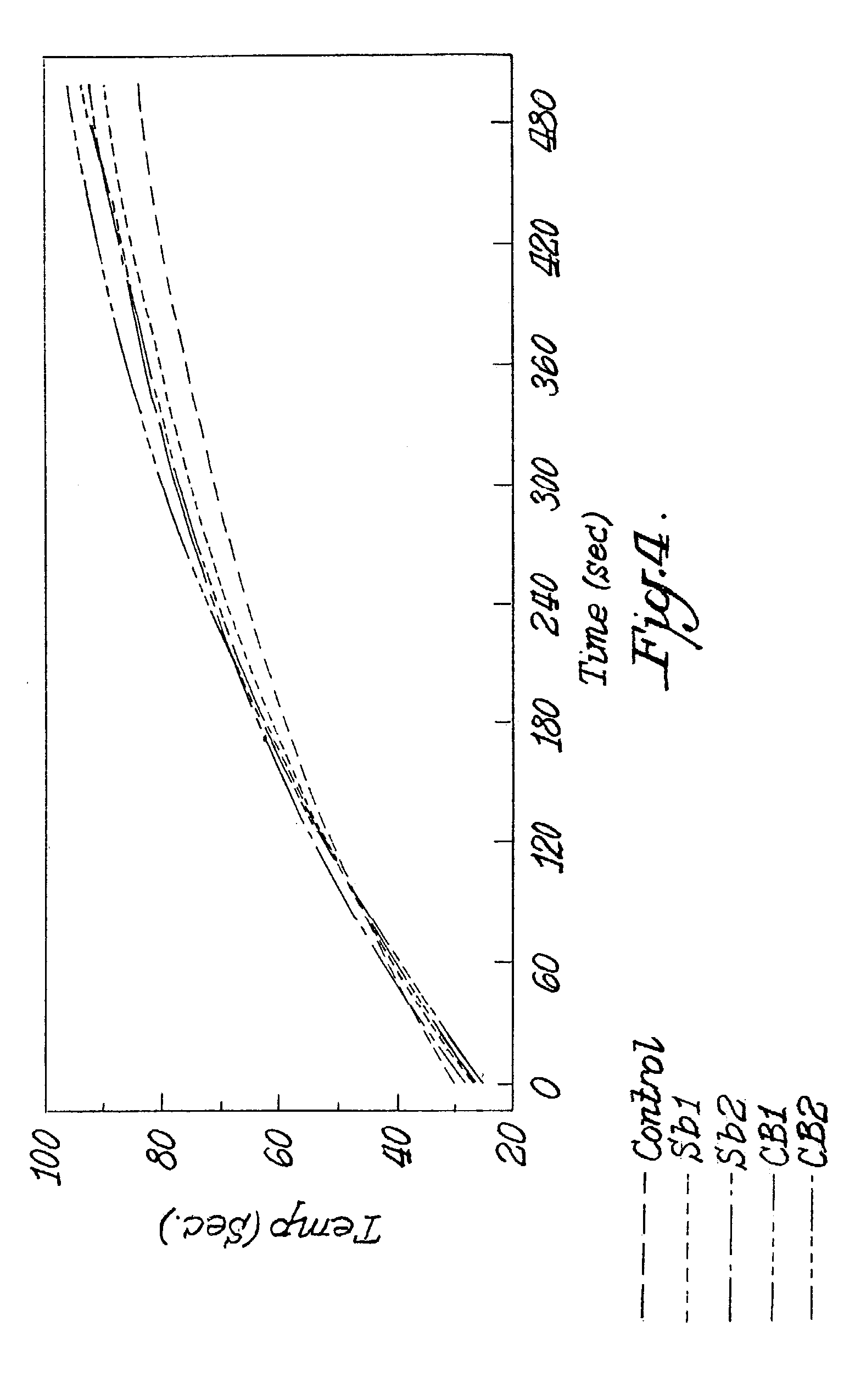Molding of polypropylene with enhanced reheat characteristics
a technology of reheating characteristics and polypropylene, which is applied in the direction of other domestic articles, synthetic resin layered products, transportation and packaging, etc., can solve the problems of reducing the rate of reheating preform, reducing the efficiency of reheating preform, and requiring a significant amount of energy
- Summary
- Abstract
- Description
- Claims
- Application Information
AI Technical Summary
Problems solved by technology
Method used
Image
Examples
examples
[0031]Two methods for measuring the reheat temperature were used to assess reheating times for polypropylene compositions containing different reheating agents. First, injection molded plaques were formed from the polypropylene compositions and through heat times for such plaques were measured according to the procedure described below. Second, plaques were molded from the polypropylene compositions and surface reheat times for such plaques were measured according to the procedure described below.
Preparing the Polypropylene Masterbatch Compositions.
[0032]Polypropylene polymer granules with a size of about 2.5 to 4.0 mm in length and 2.0 to 3.0 mm in diameter were mixed with reheating agents according to the following steps. First, about 5-7 kg polypropylene polymer was mixed with liquid paraffin (about 20 ml) in a plastic bag. The polymer in the bag was tumbled to coat the polymer granules with a thin film of oil. Next, the reheating agents were added to the bag and the admixture wa...
PUM
| Property | Measurement | Unit |
|---|---|---|
| sizes | aaaaa | aaaaa |
| particle sizes | aaaaa | aaaaa |
| particle sizes | aaaaa | aaaaa |
Abstract
Description
Claims
Application Information
 Login to View More
Login to View More - R&D
- Intellectual Property
- Life Sciences
- Materials
- Tech Scout
- Unparalleled Data Quality
- Higher Quality Content
- 60% Fewer Hallucinations
Browse by: Latest US Patents, China's latest patents, Technical Efficacy Thesaurus, Application Domain, Technology Topic, Popular Technical Reports.
© 2025 PatSnap. All rights reserved.Legal|Privacy policy|Modern Slavery Act Transparency Statement|Sitemap|About US| Contact US: help@patsnap.com



